$59.00
AWAY FROM FREE SHIPPINGNICE. SHIPPING IS ON US!
$120.00
AWAY FROM FREE GIFTCHOOSE A FREE GIFT DURING CHECKOUT!
YOUR CART IS EMPTY. SHOP NOW.
For many people, the joy of owning a cat is overshadowed by allergies. However, there is hope for feline enthusiasts who suffer from allergies. Certain cat breeds are considered hypoallergenic, meaning they produce fewer allergenic proteins. If you are a feline lover who is allergic to cats, but have not completely given up on becoming a cat parent, read on to find out more about hypoallergenic cat breeds. In this article, we will be discussing what causes cat allergies and explore ten popular hypoallergenic breeds.

Cat allergies stem from an immune system reaction to specific proteins found in a cat's saliva, urine, and dander. The primary allergenic protein responsible for triggering allergic reactions is called Fel d 1. Cats naturally produce this protein in their sebaceous glands, and when they groom themselves, the saliva containing Fel d 1 dries on their fur. As the fur sheds or the cat scratches, these allergens become airborne, leading to allergic responses in susceptible individuals.
When a person with cat allergies comes into contact with these allergenic particles, their immune system mistakenly identifies them as harmful substances and releases histamines to protect the body. Histamines cause symptoms such as sneezing, runny nose, itchy and watery eyes, coughing, wheezing, and skin rashes. The severity of the allergic reaction can vary from person to person, ranging from mild discomfort to more severe respiratory issues.
It's worth noting that cat allergens can be persistent and remain in the environment for a long time. Even after a cat has left a space, the allergens can still linger on surfaces such as furniture, carpets, and clothing, triggering allergic reactions in sensitive individuals. Therefore, it is essential to address not only the cat's allergenic properties but also to maintain a clean and allergen-free living environment for allergy sufferers.
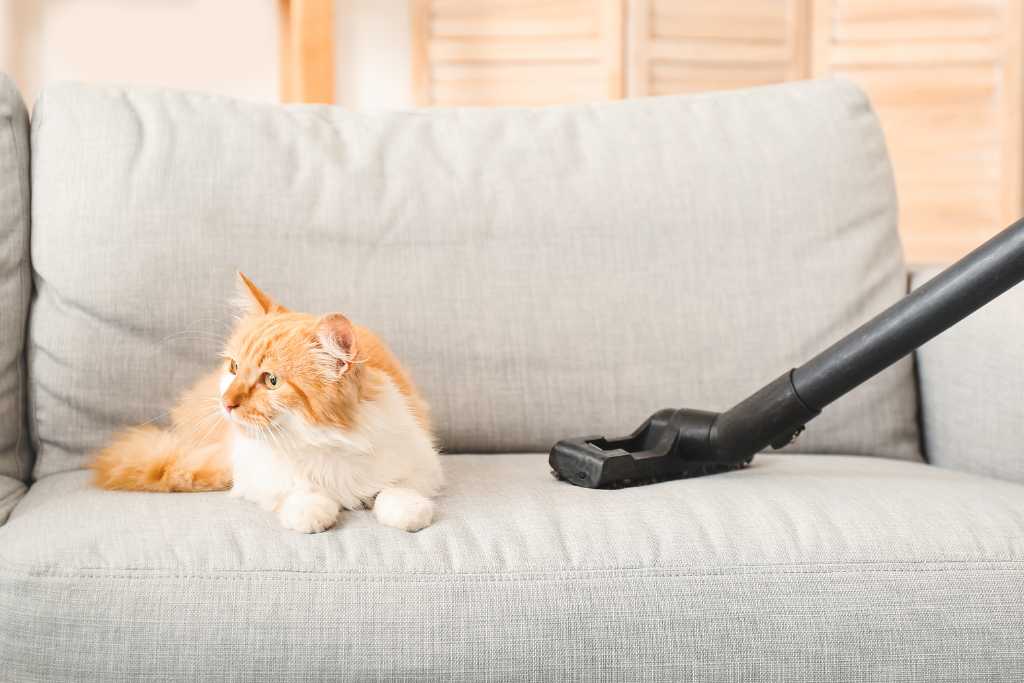
While no cat breed is entirely hypoallergenic, some breeds produce fewer allergenic proteins or have unique characteristics that make them more suitable for allergy sufferers. The following factors contribute to a cat being considered hypoallergenic:
Lower Fel d 1 production
Hypoallergenic cats typically produce lower levels of Fel d 1 protein, reducing the likelihood of triggering allergies.
Reduced shedding
All cats shed but certain cats breeds do shed less tend to spread fewer allergens in the environment. While shedding is a normal and natural process, excessive shedding or sudden changes in shedding patterns can sometimes indicate an underlying health issue or poor nutrition. Ensure your cat is receiving high quality cat food that promotes healthy skin and coat like this Stella & Chewy's Stella's Solutions (Skin & Coat) Duck & Salmon Freeze-Dried Raw Cat Food and if the problem still persists, it's best to consult with a veterinarian for proper evaluation and guidance.
Grooming habits
Some breeds may groom themselves less frequently, resulting in lower allergen. One example is the Siberian cat. It's important to note that individual cat behaviour can still vary within the breed, and not all Siberian cats may exhibit reduced grooming habits.
Size of allergen particles
Certain cat breeds produce larger allergen particles that are less likely to be inhaled or penetrate deeply into the respiratory system.
It's important to note that individual reactions to cat allergens can vary, and what may be hypoallergenic for one person may still cause allergies in another. If you're considering getting a cat and have allergies, spend time with the specific breed you're interested in to see how you personally react before making a decision. Additionally, keeping a clean living environment, regularly grooming your cat, and using air purifiers can also help reduce allergens in your home.

Balinese
Balinese cats are sometimes referred to as the “long-haired Siamese”. Despite their long coats, these Balinese are not frequent shedders and require minimal cat grooming. Balinese cats are said to have less of the Fel d 1 protein, making them great for people with allergies.
Siberian
This majestic breed is believed to produce lower levels of Fel d 1. Their thick, triple-layered coat may also minimise allergen dispersal. However, these cats are quite high maintenance when it comes to grooming, and brushing is required several times a week, especially during their shedding times. Use a slicker brush to remove the excess fur and a metal comb to prevent tangles.
Russian Blue
The Russian Blue cat breed is known for its beauty - elegant strides and shimmering emerald eyes. Despite having a thick coat, these cats are low shedding. Russian Blues are also considered hypoallergenic due to reduced shedding and lower levels of allergenic proteins. Russian Blues are highly intelligent and often form super strong bonds with their owners, and they'll follow you everywhere.
Sphynx
Despite being hairless, Sphynx cats can still produce allergens. However, their lack of fur reduces the amount of allergens that stick to their coat. Be aware that despite having no coat, their soft Chamois leather-like skin still requires regular care. The fact they have no coat means that there's nowhere for their body oils to be absorbed, therefore they need to be carefully washed frequently. We recommend sticking with a mild shampoo, moisturising shampoo like this Kin+Kind Sensitive Skin Oatmeal Unscented Natural Dogs & Cats Shampoo.
Devon Rex
Known for their curly or wavy hair, Devon Rex cats shed less and may produce fewer allergens. You can wipe down the coat of this cat with a clean towel or pet wipes but generally, Devon Rex cats won’t require much grooming care to keep them clean.
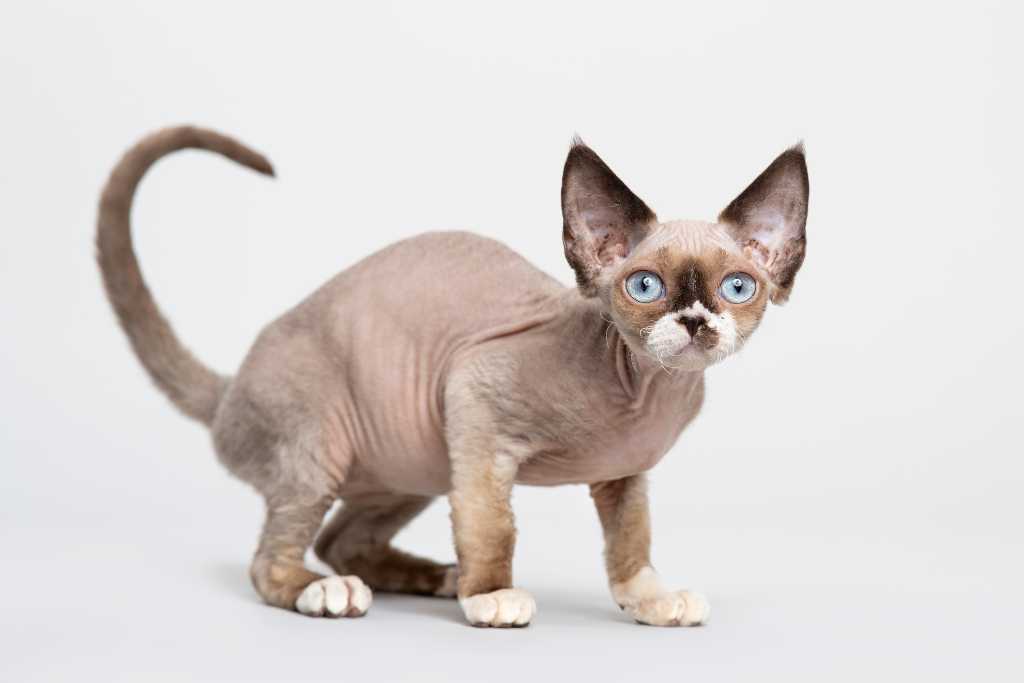
Cornish Rex
Similar to the Devon Rex, the Cornish Rex breed has a unique coat that reduces shedding and allergen distribution, making them more tolerable to those with allergies. Be aware that the curly coat of these cats has no other hair except for down - it is fine and light and has a tendency to get greasy rather quickly.
Javanese
Javanese cats have a semi-long coat that requires regular grooming to prevent matting and minimise allergen build-up in the environment.
Bengal
Although not completely hypoallergenic, Bengal cats have a unique pelt-like coat that may reduce the spread of allergens. These cats are said to produce less Fel d 1 protein than many other breeds and shed less hair, and some owners with allergies report that Bengals rarely trigger them.
Burmese
Burmese cats have a sleek, short coat and are often considered hypoallergenic due to their lower allergen levels. Burmese cats don't need much grooming.
Abyssinian
Although Abyssinian cats aren't typically considered hypoallergenic, they may be ok for people with milder cat allergies. They have lower dander production, low shedding levels and also lower Fel d1 production levels. They don't need frequent grooming. Weekly combing and occasional baths can help remove dander, debris, and loose hair.
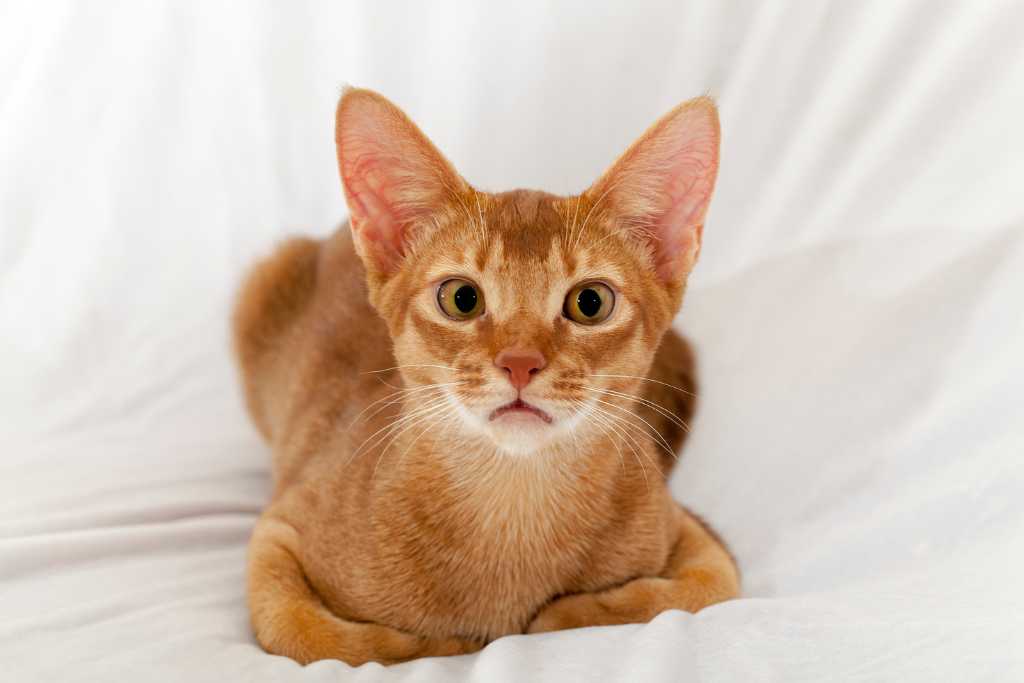
Reducing cat allergens in the home is crucial for creating a more comfortable living environment for individuals with cat allergies. Here are some effective strategies to minimise cat allergies:
Establish cat-free zones
Designate certain areas of your home as cat-free zones, such as bedrooms or specific rooms where you spend a significant amount of time. This helps create allergen-free spaces where you can retreat and minimise exposure to allergens.
Use High-Efficiency Particulate Air (HEPA) filters
HEPA filters are designed to capture small particles, including allergens, from the air. Consider using HEPA filters in your vacuum cleaner, air purifiers, and HVAC system to help remove cat allergens from your home's air.
Regular grooming
Regularly grooming your cat can help reduce the amount of allergens present in their fur. Brushing your cat daily can help remove loose hair and dander that may contain allergens. Ideally, someone without cat allergies should perform the grooming outside or in a well-ventilated area.
Wash Bedding and soft furnishing
Wash your bedding, blankets, pillowcases, and any other soft furnishings that may have come into contact with cat allergens regularly. Use hot water and a detergent that is effective against allergens. Additionally, consider using allergen-proof covers for mattresses, pillows, and upholstery.
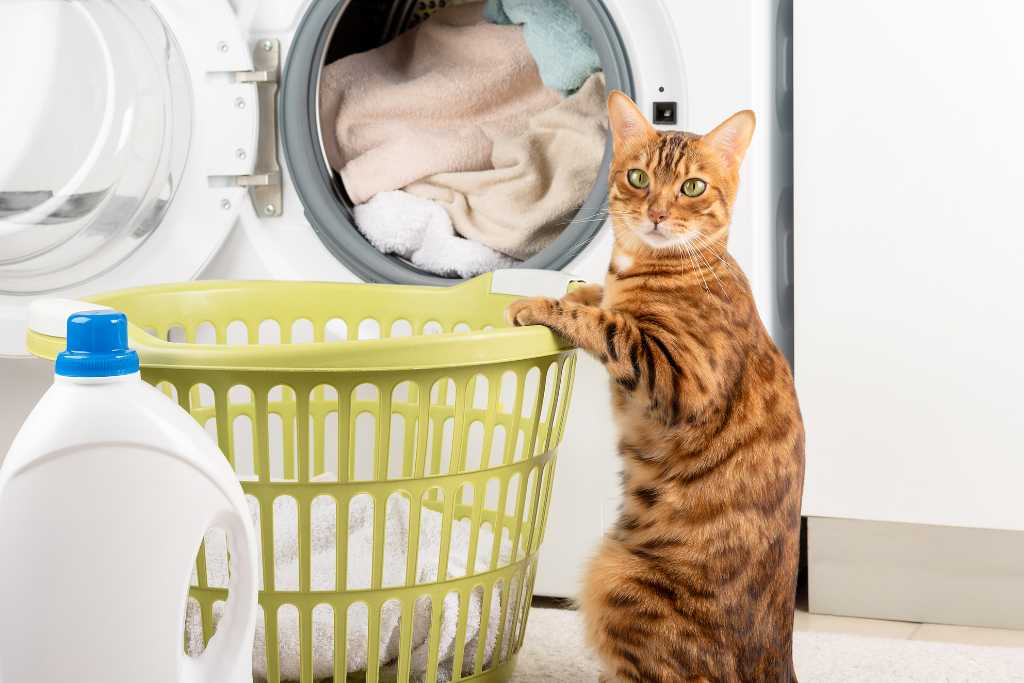
Clean and vacuum frequently
Clean your home regularly to remove allergens that may have settled on surfaces. Use a damp cloth when dusting, as it helps trap the allergens instead of spreading them into the air. Vacuum carpets, furniture, and curtains with a vacuum cleaner equipped with a HEPA filter to effectively capture allergens.
Minimise upholstered furniture
Upholstered furniture tends to trap and hold onto allergens. Consider choosing furniture with smooth surfaces that can be easily wiped clean instead of fabric-covered ones.
Consider seeking medical advice
Consult with your doctor and get guidance on appropriate medications to help manage your cat allergies. These may include antihistamines, nasal sprays, or allergy shots, depending on the severity of your symptoms. Remember that while these strategies can help reduce cat allergens in the home, they may not completely eliminate them. It's important to find a balance that works for you and consult with a healthcare professional for personalised advice.
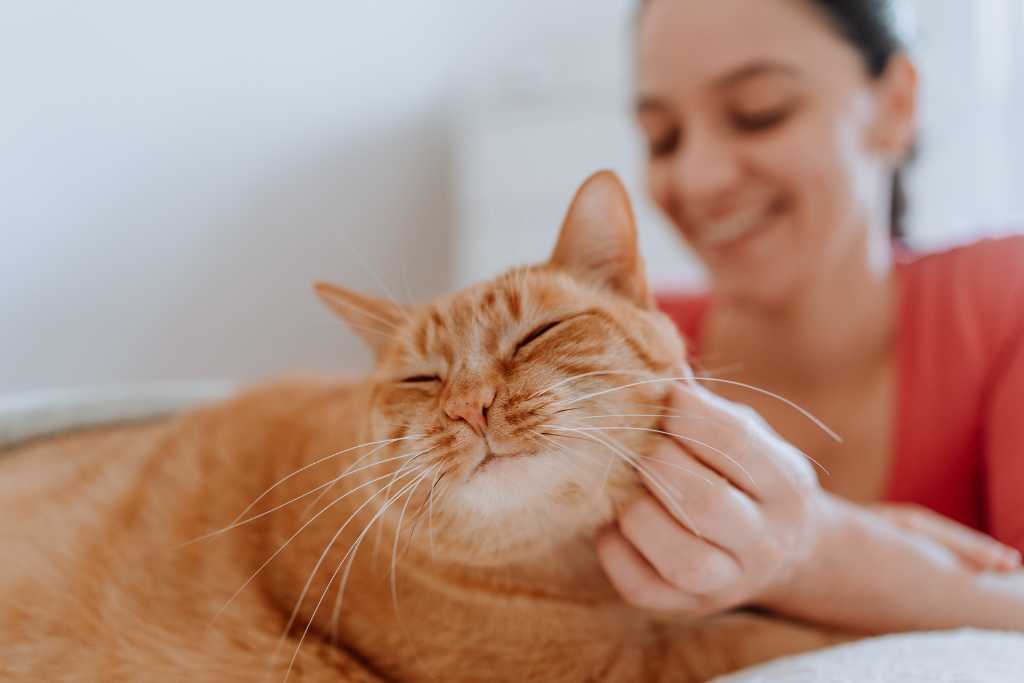
Living with cat allergies doesn't necessarily mean giving up on owning a feline companion. Hypoallergenic cat breeds offer a glimmer of hope for allergy sufferers, as they produce fewer allergenic proteins or have unique characteristics that minimise allergen dispersal. If you're considering adopting a hypoallergenic cat, it's essential to spend time with the specific breed beforehand to gauge your individual reaction. Be aware that although these cats are less likely to cause allergic reactions, there's still the possibility they might, as cat allergies differ depending on the person. As such, do consult with a medical professional to determine the severity of your symptoms before you bring home a new cat.
Remember to create a clean living environment, groom your cat regularly, and consider using air purifiers to further reduce allergens in your home. With the right breed and care, allergy sufferers may be able to experience the joys of feline companionship without the constant discomfort of allergies.

Comments will be approved before showing up.



